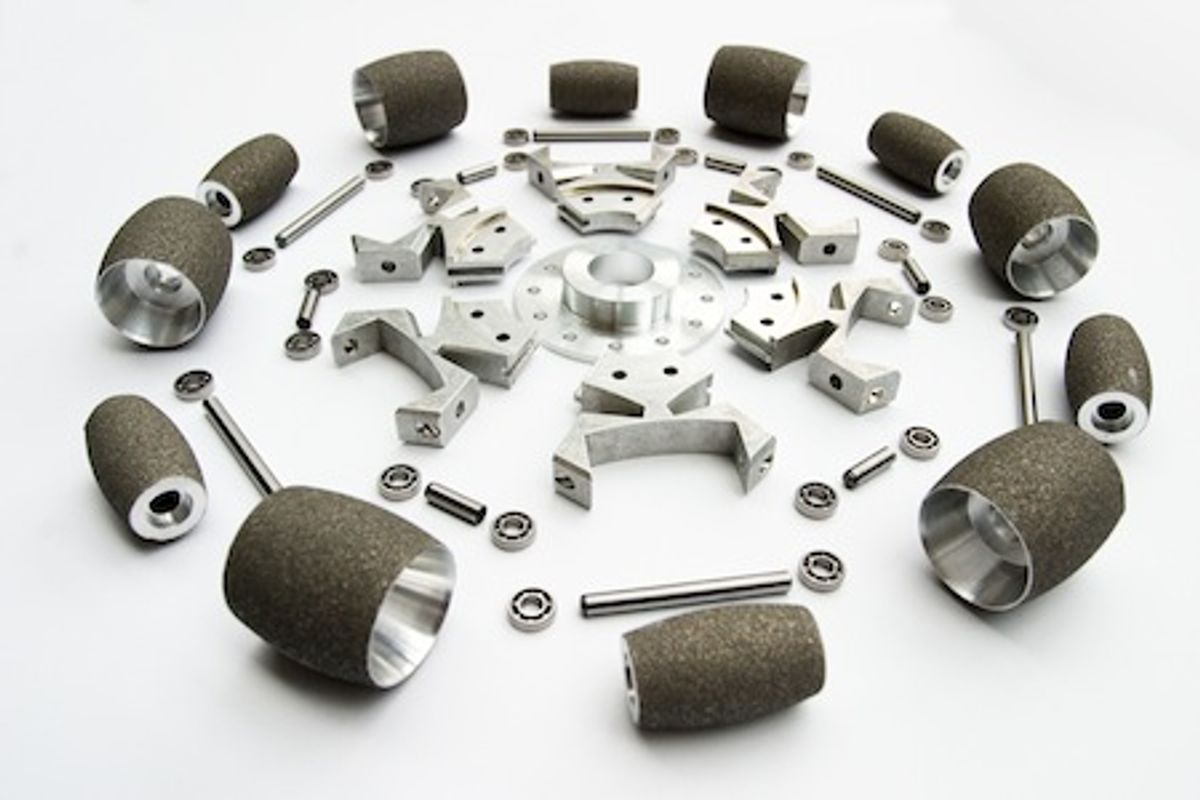A recent workshop that involved some rapid development using RoboCup robots, a demonstration of KUKA's omniMove platform, and my previous posts on KUKA's youBot and the ETH Zurich's Rezero ballbot have gotten me interested in omniwheels.
Omniwheels and their variations (also called omnidirectional wheels, Swedish wheels, Mecanum wheels, or Ilon wheels)
Historically, omniwheels date back to a 1919 patent by J. Grabowiecki, and have since been created in many different designs. Since their introduction by the Cornell RoboCup team in 2000 (see Raffaello D'Andrea's research paper), they have been widely used in some RoboCup categories, where they allow the soccer robots to move in a straight line, while rotating along the line in order to arrive with the desired orientation.
Apart from the RoboCup setting, omniwheels are also used in omnidirectional conveyor systems, for example for handling packages. As you can see from the top picture (showing the parts of the custom-made omniwheels for the Rezero project), the mechanical design of omniwheels is complex. This, along with the inevitable vibrations and comparatively high wear and tear, have limited their use to a few niche applications.
One such niche is moving very heavy or large goods such as large aircraft wings or the rotor blades of wind energy plants. The picture above shows KUKA's heavy load carrier, the HLC 60000. Built in 2007, it is used for internal logistics with payloads of up to 60 tons. The biggest KUKA omniMove vehicle ever built is 32 meters long, 4 meters wide and has a payload of 100 tons.
Other niches are forklifts for aircraft carriers made by U.S. company Airtrax or some versions of Segway's RMP platform.
Another interesting, but still more futuristic, application of omniwheels is to drive the spheres used in ballbots like Masaaki Kumagai's BallIP and the Rezero (or in cars in the movie "I, Robot," where they allow omnidirectional movement without reorientation of the drive unit).
Will omniwheels become the wheel choice for robotics, or will they remain a niche?
More photos:
Thanks Raff, Robert, Ray and Mike!













